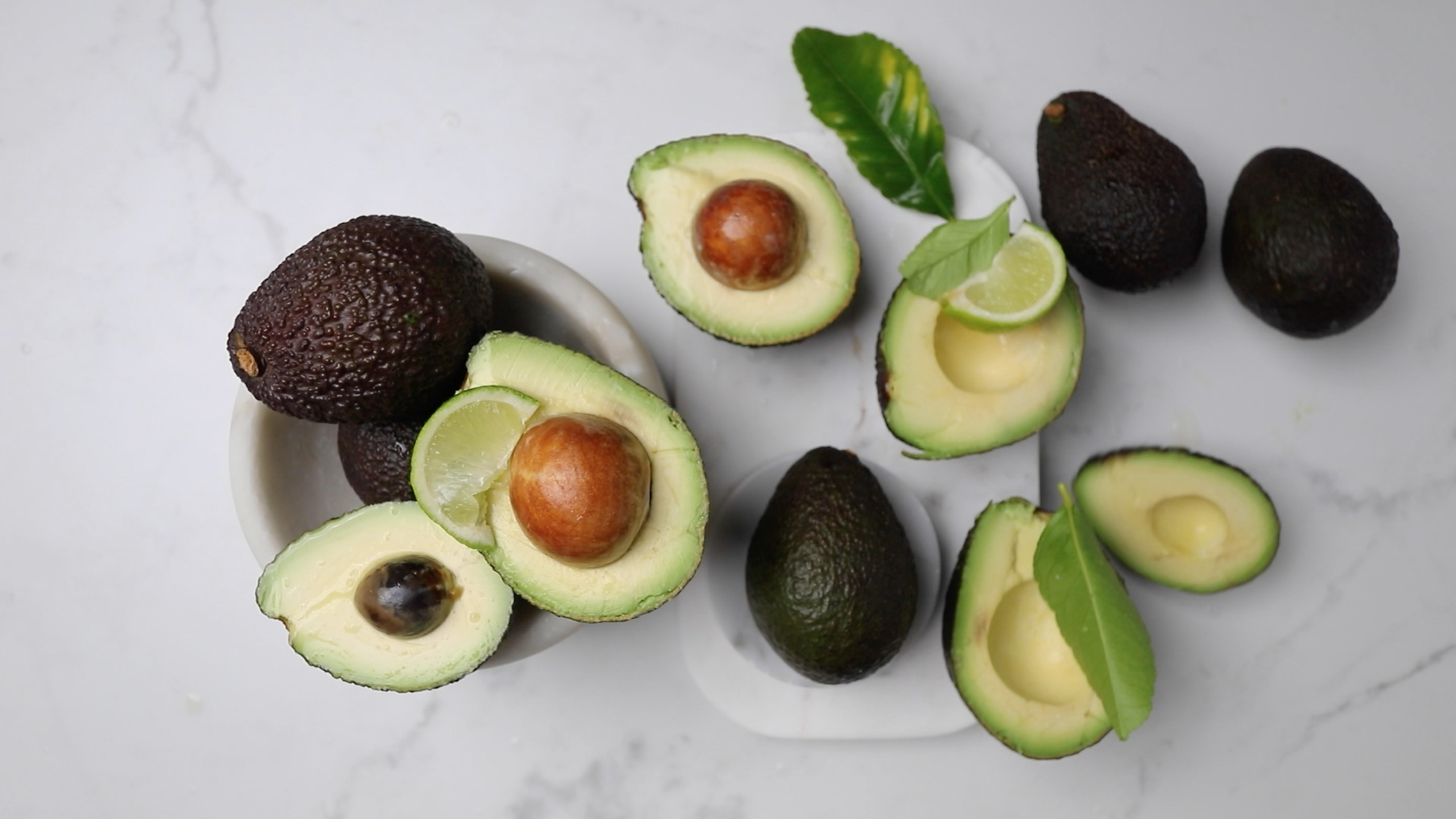This is why you shouldn’t squeeze your avos
How do you tell whether that perfect-looking avo really is as good as it looks? Turns out squeezing them is not the best option. Here are our top tips on how to recognise a perfectly ripe avo without damaging the fruit.
Have you ever stood and watched fellow shoppers choosing avos? No matter which avos they go for, ripe and ready or ripen at home, they all have one thing in common – they prod, poke and squeeze the avos!
It’s a common misperception that avo ripeness can only be judged by the softness of the fruit. Squeezing avos damages them, leading to bruising and spoiling.
So how do you tell if that perfect-looking avo really is as good as it looks? Avos don’t ripen on the tree, they only ripen once picked. They soften from the round end up towards the stalk.
If you’re buying loose avos, the first sign of ripeness can be seen on the fruit stalk. Touch it gently and it should fall off into your hand. If the stalk hole left behind has a soft greenish yellow colour, the fruit inside should be perfect. If there is any sign of blackness or discolouration under the stalk, the fruit could be bruised or over-ripe.
If the stalk is still firmly attached, the avo isn’t ripe yet and needs a few more days in the fruit bowl. If you want your avos to ripen quicker, wrap them in newspaper or put them in a brown paper bag together with a banana.
The dark-skinned avos are usually picked without their stems, but you can easily tell when they’re ready to eat because their skin changes from green to purple/black when ripe.

If the avos are pre-packed and you can’t check the stalk, gently feel the area at the top of the fruit around the stalk base; it should be soft and give slightly under your gentle touch. If this area is still hard, the avo is unripe.
Some avos have already been ripened before being packed. These are packaged in punnets and labelled ‘ripe and ready to eat’. These avos definitely don’t need to be squeezed! Rest assured the avos are ready for the table. If you happen to cut open such an avo and discover it’s not ripe as promised, return it to the retailer for a refund or exchange.
All avos should be stored at room temperature. Avos that have ripened and those labelled ‘ripe and ready to eat’ should be stored in the fridge at 6-7°C; temperatures lower than 6°C can result in chilling injury (blackened skin and grey discolouration). If you don’t want your avos to ripen just yet, you can also store hard, unripe avos in the fridge on the same day you bought them until needed. But don’t keep them in the fridge for longer than a week.
South Africans are fortunate in that both green and dark-skinned avos are available here almost all year round, and are equally versatile, delicious and nutritious! The buttery, creamy green-skinned avo varieties are available from March until October, and the rich, nutty dark-skinned avocados from March until November.
For further information and avo recipes, visit www.avocado.co.za, like us on Facebook @iloveavocadoSA and follow us on Instagram @iloveavossa.
Photographs: South African Avocado Growers’ Association, TASTE



Comments